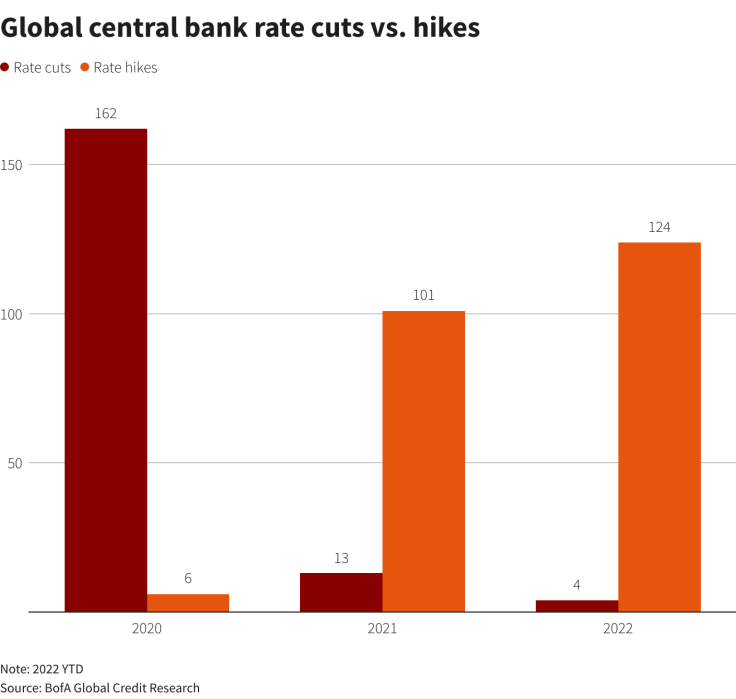Wall St Ends Up But Still Down On Week As Volatility Rules

U.S. stocks closed with a modest bounce on Friday but still suffered the biggest weekly percentage decline in two years as investors wrestled with the growing likelihood of a recession while global central banks tried to stamp out inflation.
Stubbornly high inflation has unnerved investors this year as the U.S. Federal Reserve and most major central banks have begun to pivot from easy monetary policies to tightening measures which will slow the economy, possibly causing a recession, and potentially dent corporate earnings.
Each of the three major Wall Street indexes fell the third week in a row. The benchmark S&P 500 index suffered its biggest weekly percentage drop since March 2020, the height of the COVID-19 pandemic plunge.
"Right now you are going to see a lot of volatility and it is primarily going to be because of the fact the Fed is going to be front-end loading all these rates hikes and just trying to gauge the inflation picture and it is very clouded right now," said Megan Horneman, director of portfolio strategy at Verdence Capital Advisors in Hunt Valley, Maryland.
"Just expect volatility, it is here to stay, it is going to be here until we get a little bit more clarity on have we really reached peak inflation."
The Dow Jones Industrial Average fell 38.29 points, or 0.13%, to 29,888.78, the S&P 500 gained 8.07 points, or 0.22%, at 3,674.84 and the Nasdaq Composite added 152.25 points, or 1.43%, at 10,798.35.
For the week, the Dow lost 4.79%, its biggest weekly percentage drop since October, 2020, the S&P 500 lost 5.79% and the Nasdaq slid 4.78%.
The benchmark S&P index has slumped about 23% year-to-date and recently confirmed a bear market began on Jan. 3. The Dow Industrials was on the cusp of confirming its own bear market.
Stocks rallied on Wednesday after the Fed raised its key rate by 75 basis points, the biggest hike in nearly three decades, while the Bank of England and the Swiss National Bank also raised borrowing costs.
Graphic: Global central bank rate cuts vs. hikes -

On Friday, Fed Chair Jerome Powell once again stressed the central bank's focus on bringing back inflation to its 2% target while speaking at a conference.
Economic data on Friday showed production at U.S. factories fell unexpectedly in the latest indication economic activity was on the wane.
Gains were led by the communication services and consumer discretionary sectors, which rose 1.31% and up 1.22%, respectively, on the session. The two have been among the worst performing of the 11 major groups on the year.
In contrast, energy, the year's best performing sector, fell with a 5.57% tumble and suffered its biggest weekly percentage drop since March 2020, on concerns a slowing global economy could sap demand for crude oil.
Also contributing to choppy trading was the expiration of monthly and quarterly options contracts ahead of the Juneteenth market holiday on Monday.
Volume on U.S. exchanges was 17.99 billion shares, compared with the 12.42 billion session average over the last 20 trading days.
Advancing issues outnumbered decliners ones on the NYSE by a 1.37-to-1 ratio; on Nasdaq, a 1.92-to-1 ratio favored advancers.
The S&P 500 posted one new 52-week high and 57 new lows; the Nasdaq Composite recorded 11 new highs and 259 new lows.
© Copyright Thomson Reuters 2024. All rights reserved.




















